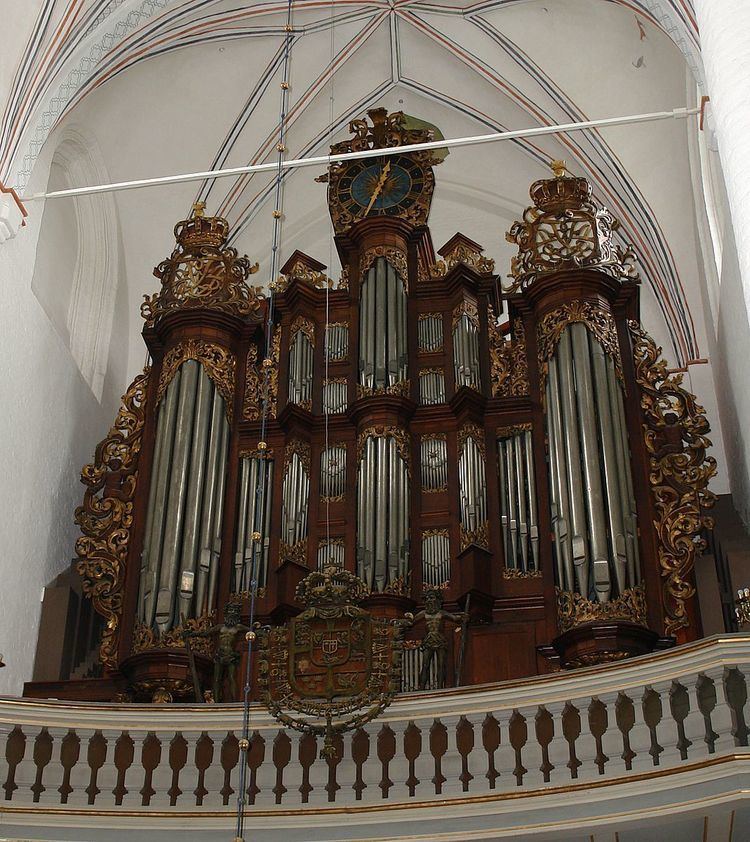Frobenius is a Danish firm of organ builders.
Frobenius Orgelbyggeri (Th. Frobenius & Sons / Th. Frobenius & Sønner Orgelbyggeri A/S) was founded in Copenhagen by Theodor Frobenius (1885–1972) in 1909. The firm moved to Lyngby in 1925. Theodor's sons Walther and Erik joined the company in 1944, at the same time that they began to build organs in the classical tradition, with mechanical actions and slider windchests. They build organs with characteristic modern casework, usually arranging the pipework of each manual such that three to six repeating arrangements of front pipes are shown in the façade. Their organ development after 1925 was in the best tradition of neo-classical design.
Aarhus Cathedral, Denmark, 89 stops (1928-2001) (The largest church organ in Denmark)The Queen's College, Oxford, 22 stops (1965)Church of the Assumption, Tullamore, Ireland, 53 stops (1965; relocated from Vor Frue Kirke, Copenhagen in 1994)First Congregational Church, Cambridge, Massachusetts, 40 stops (1972)Thisted Kirke, 44 stops (1972)Ribe Domkirke, 50 stops (1973/1994)St Mortens Kirke, Naestved, 44 stops (1975)Vangede Kirke, Gentofte, 40 stops (1979)Robinson College, Cambridge, 26 stops (1979)Takayama Mahikari Grand Shrine, Japan, 45 stops (1984)All Saints Church, Kingston upon Thames, 39 stops (1988)Opstandelseskirken, Albertslund, 36 stops (1992)Dorfkirche Marienfelde, Berlin, 32 stops (1994)Canongate Kirk, Edinburgh, Scotland, 19 stops (1998) (The 1000th organ built by Frobenius)Jørlunde Kirke, Denmark, 24 stops (2009) (Tonal design by Frederik Magle)Hallgrimskirkja, Reykjavik, Iceland
